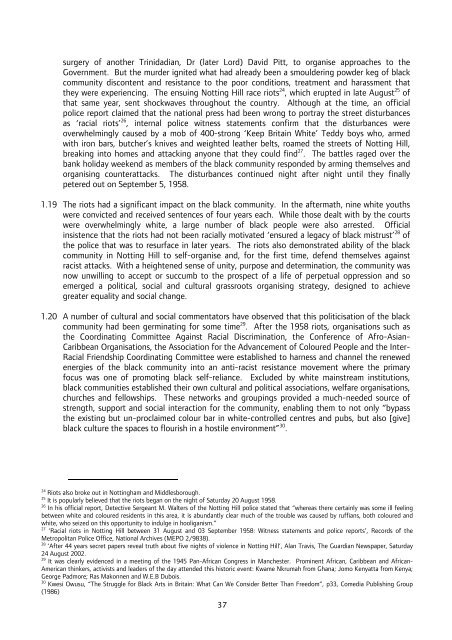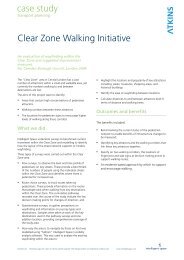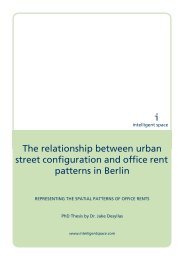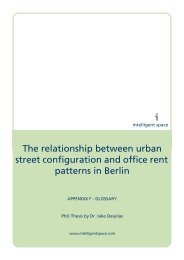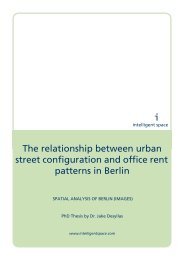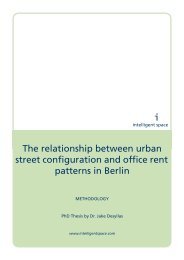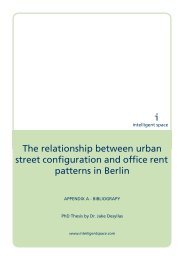Notting Hill Carnival Strategic Review - Intelligent Space
Notting Hill Carnival Strategic Review - Intelligent Space
Notting Hill Carnival Strategic Review - Intelligent Space
You also want an ePaper? Increase the reach of your titles
YUMPU automatically turns print PDFs into web optimized ePapers that Google loves.
surgery of another Trinidadian, Dr (later Lord) David Pitt, to organise approaches to the<br />
Government. But the murder ignited what had already been a smouldering powder keg of black<br />
community discontent and resistance to the poor conditions, treatment and harassment that<br />
they were experiencing. The ensuing <strong>Notting</strong> <strong>Hill</strong> race riots 24 , which erupted in late August 25 of<br />
that same year, sent shockwaves throughout the country. Although at the time, an official<br />
police report claimed that the national press had been wrong to portray the street disturbances<br />
as ‘racial riots’ 26 , internal police witness statements confirm that the disturbances were<br />
overwhelmingly caused by a mob of 400-strong ‘Keep Britain White’ Teddy boys who, armed<br />
with iron bars, butcher’s knives and weighted leather belts, roamed the streets of <strong>Notting</strong> <strong>Hill</strong>,<br />
breaking into homes and attacking anyone that they could find 27 . The battles raged over the<br />
bank holiday weekend as members of the black community responded by arming themselves and<br />
organising counterattacks. The disturbances continued night after night until they finally<br />
petered out on September 5, 1958.<br />
1.19 The riots had a significant impact on the black community. In the aftermath, nine white youths<br />
were convicted and received sentences of four years each. While those dealt with by the courts<br />
were overwhelmingly white, a large number of black people were also arrested. Official<br />
insistence that the riots had not been racially motivated ‘ensured a legacy of black mistrust’ 28 of<br />
the police that was to resurface in later years. The riots also demonstrated ability of the black<br />
community in <strong>Notting</strong> <strong>Hill</strong> to self-organise and, for the first time, defend themselves against<br />
racist attacks. With a heightened sense of unity, purpose and determination, the community was<br />
now unwilling to accept or succumb to the prospect of a life of perpetual oppression and so<br />
emerged a political, social and cultural grassroots organising strategy, designed to achieve<br />
greater equality and social change.<br />
1.20 A number of cultural and social commentators have observed that this politicisation of the black<br />
community had been germinating for some time 29 . After the 1958 riots, organisations such as<br />
the Coordinating Committee Against Racial Discrimination, the Conference of Afro-Asian-<br />
Caribbean Organisations, the Association for the Advancement of Coloured People and the Inter-<br />
Racial Friendship Coordinating Committee were established to harness and channel the renewed<br />
energies of the black community into an anti-racist resistance movement where the primary<br />
focus was one of promoting black self-reliance. Excluded by white mainstream institutions,<br />
black communities established their own cultural and political associations, welfare organisations,<br />
churches and fellowships. These networks and groupings provided a much-needed source of<br />
strength, support and social interaction for the community, enabling them to not only “bypass<br />
the existing but un-proclaimed colour bar in white-controlled centres and pubs, but also [give]<br />
black culture the spaces to flourish in a hostile environment” 30 .<br />
24<br />
Riots also broke out in <strong>Notting</strong>ham and Middlesborough.<br />
25<br />
It is popularly believed that the riots began on the night of Saturday 20 August 1958.<br />
26<br />
In his official report, Detective Sergeant M. Walters of the <strong>Notting</strong> <strong>Hill</strong> police stated that “whereas there certainly was some ill feeling<br />
between white and coloured residents in this area, it is abundantly clear much of the trouble was caused by ruffians, both coloured and<br />
white, who seized on this opportunity to indulge in hooliganism.”<br />
27<br />
‘Racial riots in <strong>Notting</strong> <strong>Hill</strong> between 31 August and 03 September 1958: Witness statements and police reports’, Records of the<br />
Metropolitan Police Office, National Archives (MEPO 2/9838).<br />
28<br />
‘After 44 years secret papers reveal truth about five nights of violence in <strong>Notting</strong> <strong>Hill</strong>’, Alan Travis, The Guardian Newspaper, Saturday<br />
24 August 2002.<br />
29<br />
It was clearly evidenced in a meeting of the 1945 Pan-African Congress in Manchester. Prominent African, Caribbean and African-<br />
American thinkers, activists and leaders of the day attended this historic event: Kwame Nkrumah from Ghana; Jomo Kenyatta from Kenya;<br />
George Padmore; Ras Makonnen and W.E.B Dubois.<br />
30<br />
Kwesi Owusu, “The Struggle for Black Arts in Britain: What Can We Consider Better Than Freedom”, p33, Comedia Publishing Group<br />
(1986)<br />
37


